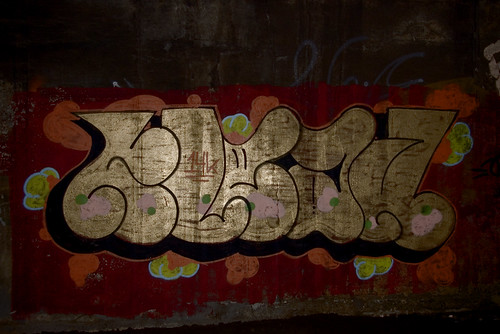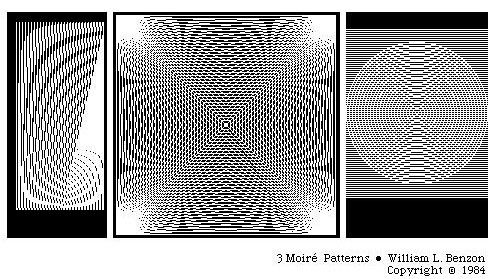Wednesday, May 28, 2014
Women Take to the Streets, Make Art
Julia Baird in the New York Times:
One of the more astonishing outcomes of the Arab Spring has been a flowering of street art, a reclamation of dangerous, oppressive places. In Egypt, images of female martyrs of the revolution, protesting violent sexual assault, have crept onto crumbling walls. Mirah Shihadeh depicts women blasting harassers with spray paint. But most of the images are quickly painted over by the Interior Ministry.It’s not just women in the Middle East who are using street art to challenge harassment. Last year, Tatyana Fazlalizadeh pasted posters around Brooklyn in a campaign designed to challenge men’s behavior in public spaces: “Stop telling women to smile!” and “My outfit is not an invitation.”
Tuesday, May 27, 2014
Patterns: Ramsay on Shakespeare, and Beyond
I was looking though the syllabus for one of Alan Liu’s courses, Literature + (New Media & Literary Interpretation: Close, Distant, and Other Reading) and came across an older, and fascinating, paper by Stephen Ramsay, In Praise of Patterns, TEXT Technology, Number 2, 2005, pp. 177-190 (with accompanying figures). It’s an interesting piece of work, both for what it says about Shakespeare and for what it says about methodology.
Methodologically, Ramsay tells us he began playing around with graphs of Shakespeare plays because, well, he was interested in graphs and wanted to see what would show up. After a fair amount of work, including a presentation to some mathematicians and collaboration with some data miners, something very interesting showed up. Alas, Ramsay doesn’t know quite what to make of it, but it’s still interesting.
And that’s just fine. That’s the kind of world we’re in. We have the capacity to find interesting things, but once found, explaining them is sometimes/often a problem. If we can’t figure out how to operate in that world (this is me speaking now) we’re not going to get very far with digital humanities. Whatever digital humanities is, it is not a positivistic haven of certain knowledge (I’ve now returned to Ramsay).
This post is going to be a long one, over 2K words. First I present Ramsay’s work, then I present some work I did on Shakespeare some time ago, work that speaks to genre by looking at a comedy (Much Ado About Nothing), a tragedy (Othello), and a romance (The Winter’s Tale). I conclude by suggesting that we’ve left the world defined by existing methods of hermeneutic analysis and exegesis.
Patterns of Loci and Scenes
Ramsay looked at how Shakespeare’s plays moved from place to place as they moved from one scene to the next. Here’s the graph he produced for The Comedy of Errors:
By standard mathematical convention such a diagram is called a graph; the ovals are called nodes and the arrows are called edges or arcs. Each node in one of Ramsay’s diagrams indicates a locus (my term) where a scene takes place and is labeled with a name or phrase designating that place. The edges indicate the transition from one scene to the following scene; the label on the edge indicates the following scene. It follows from the labeling convention that there will not be any edge labeled “1.1” as that is the first scene in any play and, as such, does not follow any other scene.
Wednesday, May 21, 2014
The Biology of Musical Rhythm
Patel AD (2014) The Evolutionary Biology of Musical Rhythm: Was Darwin Wrong? PLoS Biol 12(3): e1001821. doi:10.1371/journal.pbio.1001821
Abstract: In The Descent of Man, Darwin speculated that our capacity for musical rhythm reflects basic aspects of brain function broadly shared among animals. Although this remains an appealing idea, it is being challenged by modern cross-species research. This research hints that our capacity to synchronize to a beat, i.e., to move in time with a perceived pulse in a manner that is predictive and flexible across a broad range of tempi, may be shared by only a few other species. Is this really the case? If so, it would have important implications for our understanding of the evolution of human musicality.
The last section of the article:
The range of species capable of human-like synchronization to a beat is currently an unsolved mystery. Apart from further research on parrots and nonhuman primates, which other animals should be tested for this ability? In terms of vocal learners, further work is needed to find out whether the capacity to synchronize to a beat is latent in all vocal learners (e.g., including bats), or only in a subset of vocal learners who also have other key traits. Parrots, for example, can imitate nonvocal gestures and are also deeply social creatures who may have a propensity for coordinated movement with social partners [59]. It may be that these other traits are necessary, in addition to vocal learning, to create the capacity for human-like synchronization to a beat [15],[47],[48]. If this is the case, then only vocal learners with these other traits, such as dolphins [60], may be able to synchronize to a beat in a human-like fashion.In terms of vocal nonlearners, one animal of particular interest is the domestic horse (Equus ferus caballus), a vocal nonlearning animal that (unlike sea lions) has no close vocal-learning relatives. In favor of Darwin's views on musical rhythm, there are anecdotal accounts of horses spontaneously synchronizing their gait to the beat of music, even when they have no rider (who could unintentionally give them cues to the beat). This makes them an ideal test case for Darwin's view, since the vocal learning hypothesis predicts that they lack human-like capacities for synchronizing to a musical beat. Using new methods for testing synchronization to music in horses ([61]–[63], Movie S1), this prediction can now be tested.Stepping back to a larger view, studies of beat-based processing in other animals are part of a small but growing body of cross-species research on music processing (e.g., [16],[17],[26],[49],[50],[64]–[78]). Such research is in its infancy, but is worth pursuing because it provides an empirical approach to studying the evolutionary history of human musicality. Specifically, it can help identify which aspects of our nonlinguistic auditory processing are broadly shared with other species, which aspects are shared with just a few other species, and which are uniquely human. It is important to note that such work is essentially Darwinian in its approach. That is, even if Darwin was wrong about the widespread nature of musical rhythm processing, the cross-species approach to evolutionary studies that he championed will undoubtedly lead us to a deeper understanding of the biological roots of human music.
Tuesday, May 20, 2014
A Woodcrafter's Guide to the Galaxy
My friend Peter is building some shelves for his many CDs. I decided to document the project with photos. The challenge is to do that while managing to take some photos that have something going on aesthetically, whatever that means.
That is, I don't want the photos simply to disappear into something that would be fine as illustrations for a how-to-do-it piece, though some shots like that are fine. And yet I don't want to get too arty and, well, you know, weird.
Negotiating the Manifold Nature of Literary Criticism
Once again, what is the (academic) discipline of literary criticism? It has, of course, changed a great deal over the last 100 years, though I don’t want to look quite that far back.
Let’s start with the present, with a comment by Franco Moretti in a recent interview with Laura Miller in Salon interview:
Literary history has two sides, I think. One is the normative side: deciding what is good and what is less good. The other is the explanatory side. It’s two very different modalities of thought, and I’ve always been inclined toward the explanatory. That’s what fires my mind. And in the study of the humanities, the normative modality has disappeared. It’s all explanatory now.
It’s that two-sidedness that’s so interesting to me. Moretti characterizes them as normative versus explanatory. There are other such characterizations. Whatever the sides, there, between them, that’s an interesting no-man’s land. I want to look at these matters through a hand-full of passages I’ve been pondering for some time.
Norms vs. Explanation
In the introduction to his 1957 Anatomy of Criticism Northrup Frye relegates the making of value judgments to the history of taste (p. 21):
Shakespeare, we say, was one of a group of English dramatists working around 1600, and also one of the great poets of the world. The first part of this is a statement of fact, the second a value-judgement so generally accepted as to pass for a statement of fact. But it is not a statement of fact. It remains a value judgement, and not a shred of systematic criticism can ever be attached to it.
The profession was happy to see in Frye’s statement a statement of its aims and desires, though of course, the journalistic reviewers of books and movies did not hesitate to make aesthetic and ethical judgements about the works they reviewed. And there are persistent calls to return value judgments to the fold.
Modes of Thought
I believe Moretti is right about norms and explanations requiring “two very different modalities of thought.” I even suspect brain-imaging studies would show different patterns of brain activity during these two modes.
The basic distinction, however, is between the reading of literary texts and the writing of criticism. Northrup Frye, again, makes this distinction in the introduction to his Anatomy of Criticism (pp. 27-28):
The reading of literature should, like prayer in the Gospels, step out of the talking world of criticism into the private and secret presence of literature. Otherwise the reading will not be a genuine literary experience, but a mere reflection of critical conventions, memories, and prejudices. The presence of incommunicable experienced in center of criticism will always keep criticism as art, as long as the critic recognized that criticism comes out of it but cannot be built on it.
But Frye would not have penned those words if the distinction between reading and criticism was not already so problematic that it had to be asserted at some length.
Monday, May 19, 2014
Sunday, May 18, 2014
Warhol
The Warhol Museum in Pittsburgh has re-hung just about everything in celebration of its 20th anniversary. Warhol was, after all, a genius–whatever that is:
We can make do knowing little about Giotto or Vermeer; we can manage without the details of Monet’s life. But Warhol, by being who he was, as much as by making what he made, put himself “at the very heart of what we know as art in the 20th century,” Mr. Shiner said. That art had often tried to bridge the gap between art and life; when Warhol came along, he backfilled the chasm. Figures such as Damien Hirst and Jeff Koons have waltzed across after him.
However:
Yet there’s a risk that too much attention paid to who Warhol was could distract from the art he made, according to Christopher Bedford, the director of the Rose Art Museum at Brandeis University, who recently presented a show on Warhol’s use of photography. Warhol’s ideas about art may have expanded to include aspects of his life, but they are still ideas about art; Mr. Bedford said he felt that the museum has to be careful not to present Warhol as just another “fascinating social figure.”
The moving image:
One of the rehang’s highlights is a fourth-floor media gallery where, for the first time, the public is offered on-demand, uncut access to about 130 of Warhol’s films, videos and TV programs, mostly unfindable until now. “Movies, movies and more movies,” Warhol later recalled. “We were shooting so many, we never even bothered to give titles to a lot of them.”
Friday, May 16, 2014
Sociology in Fantasia: MMO Games
Learning who those players actually are contradicts several stereotypes right off the bat. In some games, Yee notes, "a player group may span a sixty-year age difference....There are college students, early adult professionals, and homemakers in their thirties, as well as war veterans and retirees." Most have jobs. Unlike the rest of the gaming world, a majority (80 percent) of MMO players are male. People play for various reasons, boiled down to "achievement, social interaction, and immersion," plus the pleasure of storytelling.
Over six decades ago - Gojira 1954
In honor of the latest Godzilla film, here's a blast from the past, a review of Gojira which I published in The Valve several years ago. This is the Japanese original of a film that appeared in America in 1956 as Godzilla, King of the Monsters, and scared the stuffing out of me when I was a kid. The Japanese original is richer. It came out less than 10 years after the end of WWII and about a century after Commodore Perry goaded the Japanese into investigating Western ways and refitting them into Japanese ways. Gojira has two interlinked storylines: the story about the monster from the sea and a story about love vs. arranged marriage. The second one was dropped from the American re-edit. In this essay I suggest — but no more than that, suggest — that the two storylines are, deep down, but one storyline. Here's a working paper on Gojira.
A review of Gojira, Ishiro Honda, dir. Toho Co, Ltd. 1954; reissued by Classic Media 2006.
On March 1, 1954, the United States detonated Castle Bravo at Bikini Atoll in the South Pacific. Castle Bravo was a hydrogen bomb with a yield of 15 megatons, roughly two or three times what had been expected. It was the largest radiological accident ever caused by the land of the free and the home of the brave and poisoned the crew of a Japanese tuna boat, the Daigo Fukuryu Maru (Lucky Dragon No. 5), with one crew member eventually dying of leukemia. This led to a tuna scare in Japan and a petition drive to ban the bomb.
Tomoyuki Tanaka was one of many Japanese who followed the story closely. He worked as a producer for Toho Company, Ltd., one of Japan's major film studios. When a deal fell through and created a hole in the studio's release schedule, Tanaka decided to fill it with a new kind of film, a sci-fi horror story filmed in noir style and featuring a prehistoric beast awakened by an atomic explosion. The beast was named Gojira and the film was released in Japan on November 3, 1954.
If you look closely, you'll see a reference to Lucky Dragon No. 5 early in Gojira. The movie opens on a freighter at sea off Odo Island, the Eiko-Maru. It's evening and some of the sailors are gathered together while one of them plays the guitar and another the harmonica. There's a sudden bright light and a loud noise. The sailors rush to the side of the ship to see what's happened:

Notice the number on the life preserver, “No. 5.” The freighter sinks and all hands are lost.
Thus begins Gojira. It builds slowly. Another ship is lost, meetings are held, decisions made, and eventually a scientific team is sent Odo Island to investigate. The team is headed by Dr. Kyouhei Yamane, a noted paleontologist, who is accompanied by his daughter Emiko and Hideto Ogata, who works for the steamship company that's lost two boats. At long last, 21 minutes into a 98 minute film, we catch our first glimpse of Gojira:

Gojira's footprints are saturated with Strontium 90, as is the Island's well water, evidence that Gojira as been tainted by radiation from some otherwise unidentified nuclear test. Beyond that, we know and learn little about why Gojira's on the rampage. It's simply an ugly fact, the monster's been awakened and is heading toward Tokyo, what do we do?
Not much that's effective. Gojira arrives at night and wastes Tokyo. Here's Gojira crushing a passenger car from a commuter train:

Gojira is unfazed by the high-voltage fence erected as a defense measure:

Wednesday, May 14, 2014
Graffiti Museum for Jersey City
Mana Contemporary is opening a graffiti museum in Jersey City:
Lemay has brought on veteran street artists Logan Hicks and Joe Iurato to curate the programming. Features will include rotating exhibitions, a permanent collection, a media center, large-scale exterior murals, an artist billboard, educational programs and workshops, and artist studios....
The Mana Graffiti Museum will showcase street artists from around the world who have made their mark, often illegally, on the public consciousness. Mana Graffiti Museum aligns with Mana Contemporary's core mission by providing space and resources for a community of artists to collaborate. Artists selected by curators Iurato and Hicks will be given the support and opportunity to create works as large and as ambitious as they can conceive.
Iurato says, "It's important not to let go of the ideologies behind the art form, which can get lost within the confines of museum walls. One of our initiatives will include a community wall outside the museum that's free and available to anyone with a brush or a can of paint to practice their craft."
Evolution is complex
From Nautilus, by Amy Maxmen: "The idea of directionality in nature, a gradient from simple to complex, began with the Greeks, who called nature physis, meaning growth." But finding such a gradient is not that easy:
Then molecular analyses did something else. They rearranged the order of branches on evolutionary trees. Biologists pushed aside trees based on how similar organisms looked to one another, and made new ones based on similarities in DNA and protein sequences. The results suggested that complex body parts evolved multiple times and had also been lost. One study found that winged stick insects evolved from wingless stick insects who had winged ancestors. Another analysis suggested that extremely simple animals called acoel worms—a quarter inch long and with just one hole for eating and excreting—evolved from an ancestor with a separate mouth and anus. Biologists’ arrow of time swung forward and backward and forward again.
Sleep: 8 continuous hours is a cultural convention, not a natural need
This obsession with eight hours of continuous sleep is largely a creation of the electrified age. Back when night fell for, on average, half of each 24 hours, people slept in phases. In “At Day’s Close,” a remarkable history of night in the early modern West, Roger Ekirch writes that people fell asleep not long after dark for the “first sleep.” Then they awoke, somnolent but not asleep, often around midnight, when for a few hours they talked, read, prayed, had sex, brewed beer or burgled. Then they went back to sleep for a shorter period. Mr. Ekirch concludes, “There is every reason to believe that segmented sleep, such as many wild animals exhibit, had long been the natural pattern of our slumber before the modern age, with a provenance as old as humankind.”
A different regime, for example:
What have we lost with our dismissal of what the writer George Sturt called the “quiet depths of darkness”? In traditional non-Western societies like the Toraja, what happens at night really matters. People pay close attention to their dreams, and because they are awakened more often, they have more opportunity to remember them. When the anthropologist Eduardo Kohn arrived in a small village deep in the Amazon, people slept largely outdoors in an open thatch house, surrounded by other people. They would wake at night to drink tea, because it was cold, or because of the calls of animals. “Thanks to these continuous disruptions,” he writes, “dreams spill into wakefulness and wakefulness into dreams in a way that entangles them both.”
Sunday, May 11, 2014
Digital Humanities and Graffiti
I’ve been doing quite a bit of writing about digital humanities recently, but from a particular point of view. Not only has my writing been about DH and literature, which is only one domain for digital humanities, but I’ve been arguing a point that is largely unexplored in the DH literature, that computing itself is a source of theoretical insight and inspiration. While I intend to keep on with that, I thought I’d change things up a little and ride DH on a different hobbyhorse: graffiti.
By graffiti I don’t mean any and all writing on walls, but a certain tradition, one that started pretty much in Philadelphia and New York City in the late 1960s and 1970s and had gone around the world two decades later. As far as I know it’s the only form of non-representational art that’s reached a mass audience.
Graffiti is an outlaw form, making it particularly to those humanists who regard their opposition to The System as a central attribute of their vocation. For graffiti writers typically paint on someone else’s walls, and without permission. They are thus vandals, and some of them have done jail time on that account.
One effect of graffiti’s outlaw status is that photography had become incorporated into the graffiti work-style by the 1980s. In the early years the most intense work took place on the cars and in the stations, layaways, and yards of the New York City subway systems. The system would remove or paint-over graffiti on the cars – “buff” in graffiti parlance. So, the writers would bomb a car during the night and, the next day when the car would go out on a train, they’d wait for it to roll by, camera in hand. They’d snap a photo and so have a record of their work. In a day or three or a week or two the system would buff the car and the graffiti would be gone. But the writer, and his friends and colleagues (very important), would have a photographic record of the work. It wasn’t completely lost.
Friday, May 9, 2014
Thursday, May 8, 2014
The descent of the celebrity profile
But around 1920, the focus of the profile began to shift. Gradually, publications replaced the men of action and industry with sports figures and entertainers, related, either directly or indirectly, to leisure activities. These “idols of consumption” amount, in Lowenthal’s somewhat jaundiced opinion, to “a caricature of a socially productive agent.” Narratives focus on hobbies, food and drink preferences, and personal habits: President Taft “doesn’t smoke”; baseball player Hank Greenberg “lives modestly with his parents”; newspaperman Silliman Evans specializes in “large-scale outdoor entertainment.” Details previously considered gauche—or, at the very least, relegated to the society columns—became prime profile fodder: the cost of parties, the provenance of furs, the exotic dinner courses, the ornate details of the celebrity’s home.
Bootstrapping Recursion into the Mind without the Genes
Recursion is one of the most important mechanisms that has been introduced into linguistics in the past six decades or so. It is also one of the most problematic and controversial. These days significant controversy centers on question of the emergence of recursion in the evolution of language. These informal remarks bear on that issue.
Recursion is generally regarded as an aspect of language syntax. My teacher, the late David Hays, had a somewhat different view. He regarded recursion as mechanism of the mind as a whole and so did not specifically focus on recursion in syntax. By the time I began studying with him his interest had shifted to semantics.
He had the idea that abstract concepts could be defined over stories. Thus: charity is when someone does something nice for someone without thought of a reward. We can represent that with the following diagram:
The charity node to the left is being defined by the structure of episodes at the right (the speech balloons are just dummies for a network structure). The head of the episodic structure is linked to the charity node with a metalingual arc (MTL), named after Jakobson’s metalingual function, which is language about language. So, one bit of language is defined by s complex pattern of language. Charity, of course, can appear in episodes defining other abstract stories, and so on, thus making the semantic system recursive.
Now let’s develop things a bit more carefully, but still informally. Nor do we need to get so far as the metalingual definition of abstract concepts. But we do need the metalingual mechanism.
Wednesday, May 7, 2014
Tuesday, May 6, 2014
Is There Anything Beyond Quantum Computing?
Is There Anything Beyond Quantum Computing? (3QD):
Basically, we want to know which problems computers can solve not only in principle, but in practice, in an amount of time that won’t quickly blow up in our faces and become longer than the age of the universe. We don’t care about the exact speed, e.g., whether a computer can do a trillion steps or “merely” a billion steps per second. What we care about is the scaling behavior: How does the number of steps grow as the number to be factored, the molecule to be simulated, or whatever gets bigger and bigger?I like this: scaling behavior.
For the DH folks interested in the nature of computing, THIS is the sort of thing that computer scientists worry about, but is of little direct relevance to practical programming.
A more mundane example: chess. From an abstract computational point of view chess is no more difficult than tic-tac-toe. Tic-tac-toe is a finite game. Not only does each game have a finite number of steps, but the number of possible games is finite as well. Chess is the same, provided that a convention is adopted to end some games in a draw (e.g. if no piece is exchanged in 50 moves, end the game). With that provision, each chess game has a finite number of steps and the number of games is finite.
Think about it.
However, The number of possible chess games is very very large while the number of possible tic-tac-toe games is pretty small. That makes programming a computer to play tic-tac-toe very different from programming one to play chess.
American Heartache in Jersey City
The thing about graffiti is, it’s a fugitive art. Walls come and go – in the case of freight trains, literally – pieces get buffed, tagged over, and so forth. Nothing stays.
A couple of years ago I spotted a small dilapidated industrial building near the remains of the old Morris Canal in Jersey City along the upper New York Bay. Part of the roof was gone, windows broken out, some walls a-tumble. And graffiti, inside and out. I called it the Urban Design Center and proceeded to photograph it, catching it in various weather, times of day and, of course, changes in décor.
I’ve been out of the city for a while, but went back last Saturday. And I checked in on the old Urban Design Center. Looks like it’s now being torn down, what’s left of it. More of the structure is gone and there was a steam shovel parked next to it. The graffiti was out of control – tags on throwies on pieces on tags and just random paint – the kind of stuff I like, call it graffiti chaos. There was a piece of plywood with “Rest in Peace R.I.P” painted on it in haste, with “R.I.P” repeated several times.
Monday, May 5, 2014
Digital Criticism Comes of Age, a Post at 3QD
I’ve got a new post at 3 Quarks Daily: The Only Game in Town: Digital Criticism Comes of Age.
I open with Moretti – natch – then to Willard McCarty’s 2013 Busa Award Lecture, where he talks of embracing the computer as Other. I end with Said on his belief in an autonomous aesthetic realm, despite the difficulties of conceptualizing how it could possibly work. The thrust of the article, though, is whether or not we can actually get this venture moving, really moving. What are the chances of really embracing the Other?
Though I made my peace with the computer years ago, and so am biased, I don’t know the answer to that question. But I’ve made some progress in figuring out what that question entails and that form the bulk of my essay.
The issue is one that’s been with academic literary study since the early 20th Century. In the 1920s the matter was stated most succinctly by Archibald MacLeish, that poems should not mean but be. In that late 1950s we find ourselves in the “Polemical Introduction” to Northrup Frye’s well-known Anatomy of Criticism (pp. 27-28):
The reading of literature should, like prayer in the Gospels, step out of the talking world of criticism into the private and secret presence of literature. Otherwise the reading will not be a genuine literary experience, but a mere reflection of critical conventions, memories, and prejudices. The presence of incommunicable experienced in center of criticism will always keep criticism as art, as long as the critic recognized that criticism comes out of it but cannot be built on it.
The issue came home to me in a rejection letter for my first essay on “Kubla Khan” – which ended up going into Language and Style in 1985 – where the reviewer complained that the essay “ought to argue with itself, to put into question some of the patterns it establishes-or better, perhaps to let the poem talk back.”
What does he mean, “let the poem talk back”? I know very well that the statement isn’t meant to be taken literally. But what’s the non-literal version of the statement? Under what circumstances could a poem do something like talk back?
Under face-to-face performance circumstances. To be sure, the poem doesn’t talk, but the poet does. The poet recites the poem, the teller spins the tale, the audience reacts with silence, groans, laughter, remarks, and the poet replies. There the poet/story-teller and audience share the same physical and discursive space and so CAN interact in real time. But criticism really isn’t like that, no matter how much this or that critic wishes otherwise.
Sunday, May 4, 2014
Working Paper on Computational Historicism
I've now taken my recent series of four posts on computational historicism and edited them into a single working paper. This required some reorganizing. I took that Stephen Greenblatt material that had opened the second post and moved it to the beginning of the working paper. The paper is thus framed by Stephen Greenblatt on the directionality of literary history (not his phrase) at the beginning and Edward Said on the autonomous aesthetic realm at the end. I've also expanded and tweaked some of the other discussions. I've also added two appendices.
You can download the paper HERE (SSRN) and HERE (Academia.edu). Abstract and contents below.
❖ ❖ ❖
Toward a Computational Historicism: From Literary Networks to the Autonomous Aesthetic
Abstract: Stephen Greenblatt has identified pairs of moments in literary history such that the former moment must necessarily have preceded the later: literary history has a direction. This can be explained by asserting that the later texts required computational procedures capable of operating on the objects created by the earlier procedures, in the manner of Piaget’s reflective abstraction. Beyond Greenblatt’s examples two such pairs are examined, Amleth and Hamlet, The Winter’s Tale and Wuthering Heights. Also considered: Heuser and Le-Khac on 19th Century British novels. Three network-based network models are considered, at macro (topic modeling), meso (Moretti’s character networks), and micro scales (cognitive networks) of time.
Contents
Part 1: Greenblatt’s Difference: Time and History
Part 2: Conceptual Topology and Discourse
Part 3: Spatializing Time: Sonnet 129
Part 4: Abstraction at the Time Scale of History
Part 5: Into the Autonomous Aesthetic
Appendix 1: Hamlet as Ring, The Winter’s Tale also
Appendix 2: Nine Propositions in Computational Criticism
A monumental study of the globalising age that was the 19th century
‘The Transformation of the World’, by Jürgen Osterhammel. Review by David Cannadine.
High quality global journalism requires investment. Please share this article with others using the link below, do not cut & paste the article.
Since this book runs to almost 1,000 pages of text, and includes more than 3,000 endnotes and a bibliography listing well over 3,000 items, it is impossible to do it full and adequate justice, even in a lengthy review such as this. Part monster-piece, part masterpiece, its limitations are inescapably those of the global history genre: from one perspective, the book is too long and too detailed; from another its coverage is very uneven, and subjects such as gender and culture receive inadequate attention; there is no treatment of the first world war, although the author insists that his 19th century did not end until the 1920s; readers expecting a clear chronology will be sorely disappointed; and there is a sense in which the whole never quite becomes greater than the sum of its parts.
Yet the book’s merits also compel acclaim and admiration: it is a work of prodigious scholarship and astonishing authorial stamina; within the confines of the subject, it raises the study of global history to a new level of academic sophistication and geographical comprehensiveness; it abounds with memorable phrases and aphorisms, which betoken a lively and playful mind; and it offers wise and original insights about the many ways in which the 19th century made the world that we still, today, inhabit.
A Dream of Simulation and the Reality of Description, an Open Letter to Willard McCarty
Hi Willard,
I know you’re interested in the idea of computer simulations of human mental processes, so I thought you’d be interested in how I got from my vision of such simulation – the Prospero project from the 1976 essay in Computers and the Humanities – to my current hobbyhorse, description. Description, after all, is rather pedestrian and would seem like something of a comedown from the high techno-romance of simulating the mind.
I know you’re interested in the idea of computer simulations of human mental processes, so I thought you’d be interested in how I got from my vision of such simulation – the Prospero project from the 1976 essay in Computers and the Humanities – to my current hobbyhorse, description. Description, after all, is rather pedestrian and would seem like something of a comedown from the high techno-romance of simulating the mind.
It isn’t. In fact, it’s a consequence of that romance, a step along the way. A trail that has proven to be much longer than I’d anticipated back then.
But how could I have known? Sometimes when you venture into the unknown you end up finding something familiar. But you may also end up having your mind altered and your imagination changed.
❖ ❖ ❖
When I went of to SUNY Buffalo back in 1973 I didn’t intend to work on Shakespeare’s Sonnet 129. I was gunning for Coleridge’s “Kubla Khan” and did the Shakespeare sonnet as a preliminary exercise. But I never really got around to “Kubla Khan.”
By the time I’d gotten to Buffalo I’d found my way to some of the early work on semantic networks, but didn’t know I’d find someone at Buffalo who could educate me in that art. A fellow graduate student in English, Ralph Reese, had been studying with David Hays (in the Linguistics Department) and he introduced me. It took me a couple of months to become fluent in Hays’s formalism, out of which I wrote a long term paper on some passages from Patterson, Book V.
By that time Hays had become interested in grounding his semantic theory in something, and that something was a feedback model of the mind developed by William Powers, whose book, Behavior: The Control of Perception (1973) had been well-reviewed in Science. So we – Hays and his research group – set out to figure out how to do that, theoretically, though not in simulation. The result was a model where cognition was grounded in perception and action. Though we didn’t use the term, it was a model of embodied cognition.
Saturday, May 3, 2014
Sheldon Klein on Computing Lévi-Strauss, a blast from the past
The work of Claude Lévi-Strauss was terribly important to humanistic thinking in the last half of the 20th Century. As Alan Liu has pointed out in a recent essay, “The Meaning of the Digital Humanities” (PMLA 128, 2013, 409-423) Lévi-Strauss’s structuralist anthropology was “a midpoint on the long modern path toward understanding the world as system” (p. 418).
Back in the 1970s a computer scientist and computational linguist at the University of Wisconsin, Sheldon Klein, developed a model that would generate myths. I’ve appended the title and abstract of a report of that work, with a link to the report. This is typical of the work done on story-telling in the 1970s. More recently David Ferrucci, who led IBM’s Watson project, did a story-telling project with Selmer Bringsjord: Artificial Intelligence and Literary Creativity: Inside the Mind of Brutus, A Storytelling Machine (1999).
• • • • • •
Sheldon Klein et al. Modeling Propp and Levi-Strauss in a Meta-Symbolic Simulation System. Computer Science Department, University of Wisconsin, Technical Report No. 226, October 1974.
Abstract: Tests of the system include an automated generative model for a portion of Levi-Strauss' The Raw and the Cooked, and an automated generative model for Propp's Morphology of the Folktale. Output presented includes fifty Russian folktales, generated at an average rate of 128 words per second (Univac 1110/1108), including computation of plot, generation of deep structure and generation of surface text. The meta-symbolic simulation system includes a powerful behavioral simulation programming language that models, generates and manipulates events in the notation of a semantic network that changes through time, and a generalized, semantics-to-surface structure generation mechanism that can describe changes in the semantic universe in the syntax of any natural language for which a grammar is supplied. The total system has the power of at least the 2nd order predicate calculus, and will facilitate the formulation of highly abstract meta-models of discourse, including logical quantification of such models. Other features include the ability to treat objects, characters and complex actions as manifestations of the same abstract semantic unit. Extensions of the research to riddle, dream and myth generation and analysis are discussed, as well as the possibility of modeling more of the work of Levi-Strauss.
Here’s another version of that work, in French:
Klein, S., Aeschliman, Applebaum, Balsisger, Curtis, Foster, Kalish, Kamin, Lee & Price 1976. Simulation d'hypothèses émisés par Propp et Lévi-Strauss en utilisant un système de simulation meta-symbolique. Informatique et Sciences Humaines, No. 28, pp. 63-133, Mars. [A revised and expanded French translation of 'Modelling Propp and Lévi-Strauss in a Meta-symbolic Simulation System.' in Patterns in Oral Literature, edited by H. Jason & D. Segal, World Anthropology Series, The Hague: Mouton, 1977, with a new Lévi-Strauss model, a revised Propp model, and a different set of computer generated folktales.]
Friday, May 2, 2014
Method in DH: Signal and Concept, Operationalization
Signal and concept: distinction employed by Ryan Hauser and Long Le-Khac: A Quantitative Literary History of 2,958 Nineteenth-Century British Novels: The Semantic Cohort Method. Stanford Literary Lab, Pamphlet 4, May 2012.
Operationalization: concept discussed in Franco Moretti, “Operationalizing”: or, the Function of Measurement in Modern Literary Theory, Stanford Literary Lab, Pamphlet 6, December 2013.
Think like a social scientist: Arthur Stinchcombe, Constructing Social Theories, New York: Harcourt, Brace, and World, 1968.
• • • • • •
Toward the end of their pamphlet Hauser and Le-Khac observe (pp. 46-47):
How do we get from numbers to meaning? The objects being tracked, the evidence collected, the ways they’re analyzed—all of these are quantitative. How to move from this kind of evidence and object to qualitative arguments and insights about humanistic subjects— culture, literature, art, etc.—is not clear. In our research we’ve found it useful to think about this problem through two central terms: signal and concept. We define a signal as the behavior of the feature actually being tracked and analyzed. The signal could be any number of things that are readily tracked computationally: the term frequencies of the 50 most frequent words in a corpus, the average lengths of words in a text, the density of a network of dialogue exchanges, etc. A concept, on the other hand, is the phenomenon that we take a signal to stand for, or the phenomenon we take the signal to reveal. It’s always the concept that really matters to us. When we make arguments, we make arguments about concepts not signals.
I’ve already noted that I believe the equation of computing with quantitative is misleading (From Quantification to Patterns in Digital Criticism). That’s one thing.
The solution Heuser and Le-Khac propose is to distinguish between signals, which they can measure, and concepts, which are the phenomena being indicated by the signals. The distinction is useful and it’s also pretty much standard in social science, though not necessarily in those terms. While the mechanisms responsible for the operation of, for example, an automobile, can be observed directly, those operating in human society or the human mind are generally inaccessible to direct observation.
In order to investigate those mechanisms one must propose a theory or a model and then operationalize that theory. What does that mean? Moretti (p. 1):
In order to investigate those mechanisms one must propose a theory or a model and then operationalize that theory. What does that mean? Moretti (p. 1):
Forget programs and visions; the operational approach refers specifically to concepts, and in a very specific way: it describes the process whereby concepts are transformed into a series of operations—which, in their turn, allow to measure all sorts of objects. Operationalizing means building a bridge from concepts to measurement, and then to the world. In our case: from the concepts of literary theory, through some form of quantification, to literary texts.
Just so.
Thursday, May 1, 2014
Visual Thinking for the Machinic Theorist
Visualization has proved to be essential to many projects in digital humanities. The visualizations aren’t mere illustrations of verbal concepts, helpful but not essential. They are the stuff of thought itself.
Sydney Lamb, one of the first generation of researchers in computational linguistics, has remarked that “... it is precisely because we are talking about ordinary language that we need to adopt a notation as different from ordinary language as possible, to keep us from getting lost in confusion between the object of description and the means of description” (Pathways of the Brain: The Neurocognitive Basis of Language, John Benjamins 1999, p. 274).
Working independently, and on Shakespeare plays, not language itself, Franco Moretti expresses a similar idea (Network Theory, Plot Analysis, Stanford Literary Lab, Pamphlet No. 2, May 2011, p. 4):
Third consequence of this approach: once you make a network of a play, you stop working on the play proper, and work on a model instead: you reduce the text to characters and interactions, abstract them from everything else, and this process of reduction and abstraction makes the model obviously much less than the original object – just think of this: I am discussing Hamlet, and saying nothing about Shakespeare’s words – but also, in another sense, much more than it, because a model allows you to see the underlying structures of a complex object.
These passages speak to cognitive mechanisms. Whether or not any given line of reasoning and experiment is valid, that’s a question for episdemology proper. Visualization is a matter of cognitive strategy; it’s about thinkability.
Some years ago I wrote an article on visual thinking for an encyclopedia:
William Benzon. Visual Thinking. Allen Kent and James G. Williams, Eds. Encyclopedia of Computer Science and Technology. Volume 23, Supplement 8. New York; Basel: Marcel Dekker, Inc. (1990) 411-427. Available on line: https://www.academia.edu/13450375/Visual_Thinking
I’ve reproduced the three sections of the article in the rest of this post.
• • • • • •
Visual Thinking: A Speculative Proposal
Given that visual thinking has a motor component, I offer the following speculative proposal: visual thinking involves the internalization of visuo-manipulative activity and of movement through the environment. We move through the physical environment, sometimes in a familiar place, sometimes in a strange place; we handle objects, sometimes to accomplish a specific task, sometimes simply to inspect the object. Visual thinking involves imagined locomotion in imagined settings, imagined manipulation of imagined objects. The settings and objects may be real, but not present, or they may exist only in imagination. In defining visual thinking in this way I am aligning myself with an approach to thinking which derives from Lev Semenovich Vygotsky's seminal analysis of the relationship between thought and language.
Subscribe to:
Comments (Atom)





























